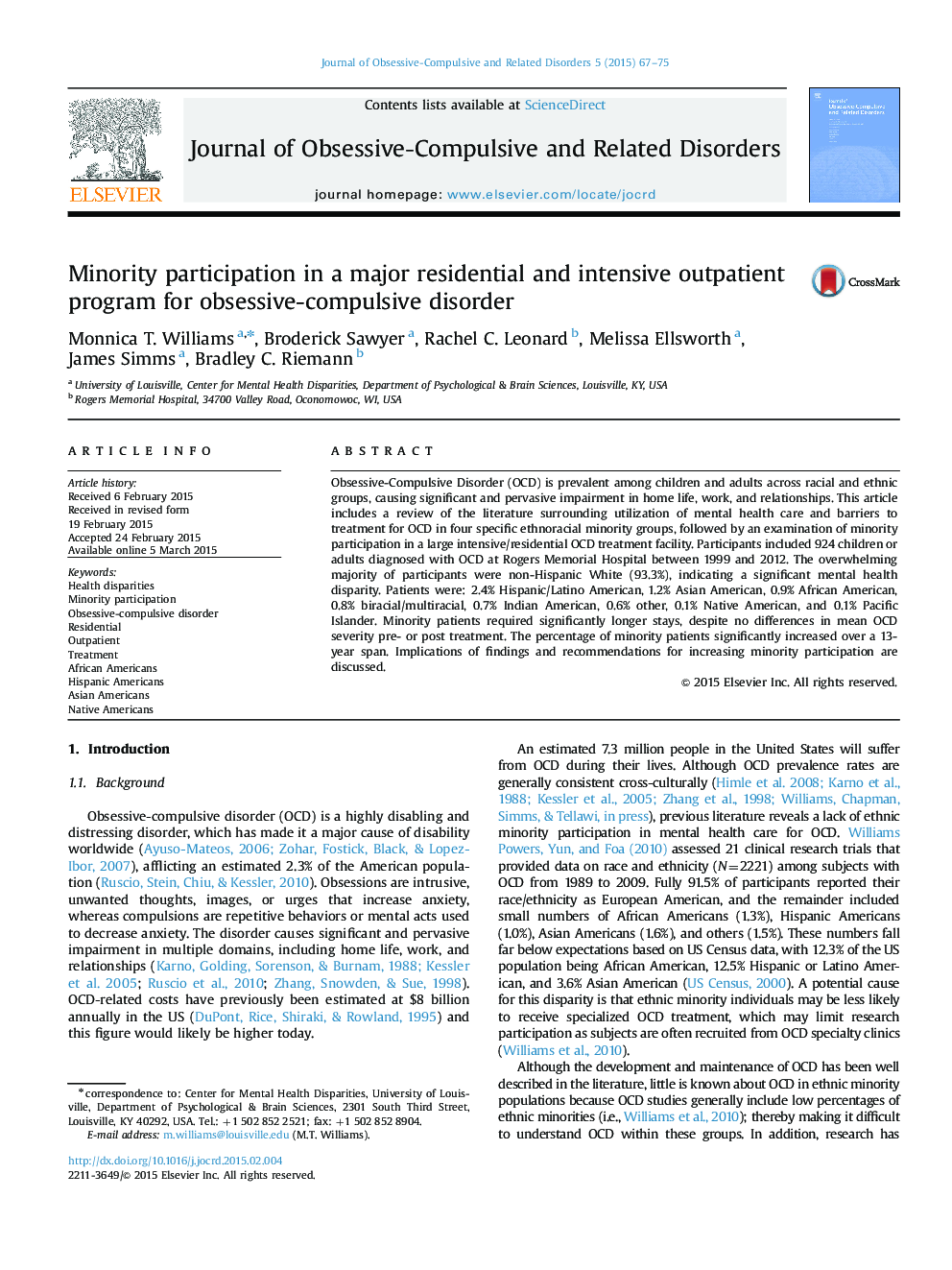| Article ID | Journal | Published Year | Pages | File Type |
|---|---|---|---|---|
| 912287 | Journal of Obsessive-Compulsive and Related Disorders | 2015 | 9 Pages |
•People with OCD (N=924) attended an intensive/inpatient program between 1999 and 2012.•Most were non-Hispanic White (93.3%), indicating a significant mental health disparity.•However, a significantly increasing percentage of minorities has been admitted each year.•Minority patients required significantly longer stays for OCD treatment.•There were no group differences in mean OCD severity pre- or post treatment.
Obsessive-Compulsive Disorder (OCD) is prevalent among children and adults across racial and ethnic groups, causing significant and pervasive impairment in home life, work, and relationships. This article includes a review of the literature surrounding utilization of mental health care and barriers to treatment for OCD in four specific ethnoracial minority groups, followed by an examination of minority participation in a large intensive/residential OCD treatment facility. Participants included 924 children or adults diagnosed with OCD at Rogers Memorial Hospital between 1999 and 2012. The overwhelming majority of participants were non-Hispanic White (93.3%), indicating a significant mental health disparity. Patients were: 2.4% Hispanic/Latino American, 1.2% Asian American, 0.9% African American, 0.8% biracial/multiracial, 0.7% Indian American, 0.6% other, 0.1% Native American, and 0.1% Pacific Islander. Minority patients required significantly longer stays, despite no differences in mean OCD severity pre- or post treatment. The percentage of minority patients significantly increased over a 13-year span. Implications of findings and recommendations for increasing minority participation are discussed.
